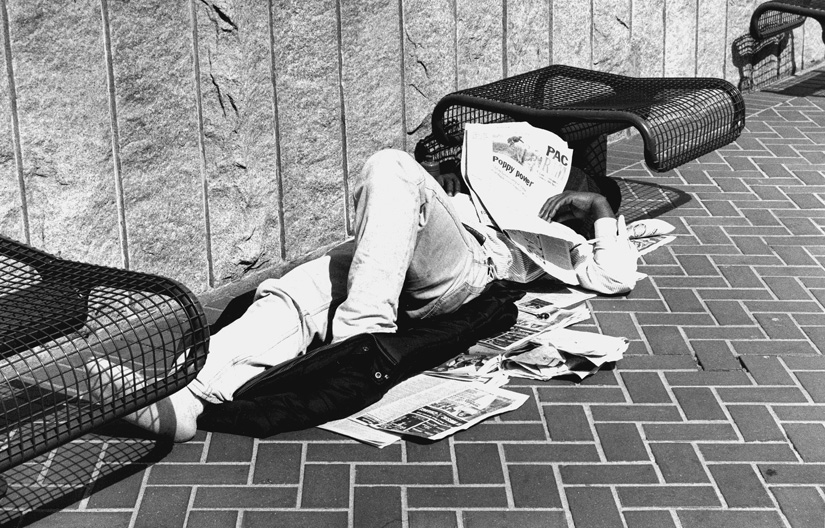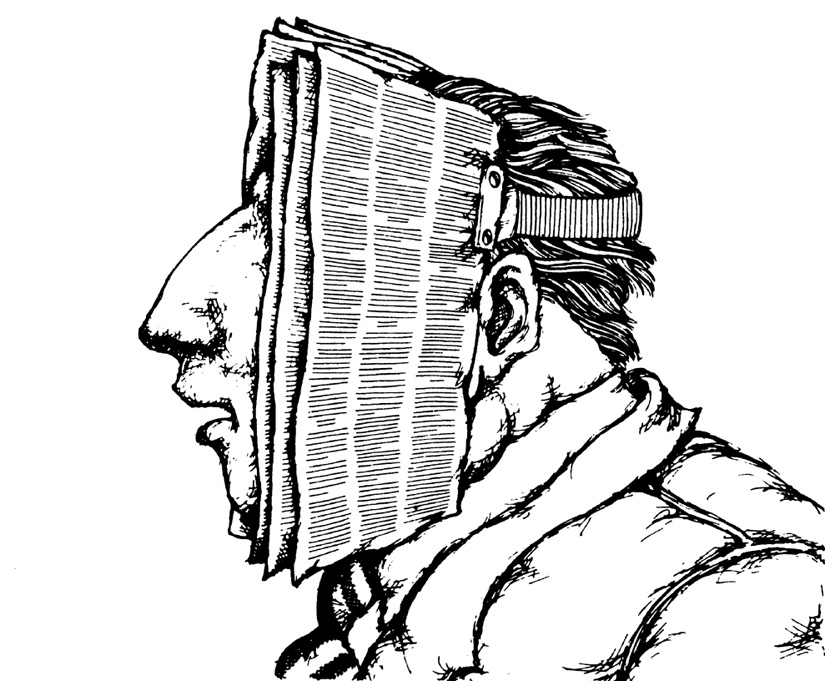
Stories from the Suitcase Clinic
by Meriah Barajas
Media has changed our world, to say the least. It has changed the way we access information, the way we communicate, and has especially influenced the way we learn about the world around us. Media’s dominance has become so pronounced that its effect on our perceptions has become commonplace in our everyday lives.
Media has definitely allowed us to do things with greater ease. We can communicate with loved ones who previously were separated from us by the barrier of distance, but are now only a Skype call or Facebook message away. We can turn on the news every morning and see what is going on in our neighborhood or around the world.
However, by the same token, we have blown media out of proportion and our reliance on these platforms has led us to a reality where our ideas are no longer our own; they are mass-produced and fed to us. We not only let the media give us information; we now let it tell us how to think about that information. We have let it tell us what to believe and how far to believe it.
We fall prey to the ways in which news outlets negatively frame the information they give, and the ways that social media applications establish the norms of how their users interact with each other, on and off of the apps. We let these platforms distance us from many human aspects of everyday life.
Instagram, Twitter and Facebook now communicate for us. The real-life, organic conversations that used to produce the relationships of our past no longer exist on the same wide scale.
In a generation where media is so prevalent, this tool with which we so easily break down the barriers of distance and time, can have the dangerous effect of building new and different kind of barriers — the kind that drive us farther apart.
The issue of homelessness is almost always inaccurately depicted throughout all media platforms. Stereotypes of homelessness are perpetuated in the media more than anything. News outlets, for one, too often take the humanity out of the information they provide.
Many viewers of the morning news don’t think twice when they hear about the thousands of individuals without homes across the country because these individuals are no longer portrayed as people with feelings and ideas. Instead, they are numbers. We see statistics: people turned into numbers because they are easier to compute that way.
Although these numbers might be informative when describing the severity of homelessness, listeners and readers often feel far removed from issues such as the extent of homelessness, poverty and the affordable housing shortage. Numbers are not as impactful because there is no human aspect tied to them to make them relatable.
On all other occasions across news media, we see either a success story of an individual who rose out of homelessness, or a story of a homeless individual who was caught in a situation involving drugs or illegal activity.
Here is where the stereotypical perceptions begin. Although stereotypes are not inherently negative, they do become a danger when we begin to base our perceptions on them.
These two kinds of stories do not give viewers or listeners an accurate depiction of what it means to be homeless and the severity of the issue as a systemic problem.

We see either very good stories that make us hopeful for humanity, or very negative depictions of people living on the streets who are wrapped up in drugs, so we turn a blind eye when we interact with such people that the news media “warns us” about.
Both of these stereotypical forms blind us to the reality of the issue, and only when we separate ourselves from this view can we begin to see the problem as one that is not an individual issue, but a societal problem, one that needs our constant attention and effort.
Entertainment media has also given us unrealistic ideas of what to expect from individuals struggling with homelessness. If we don’t see a success story like Will Smith in the movie, “The Pursuit of Happiness,” then often we see a person who follows the stereotype: one who is crazy, on drugs, has raggedy clothes.
These depictions lead us into dangerous territory, and we begin to see homelessness as existing in this neat, little box where people who are dressed nicely and own cars, or pets, or go to college, cannot be homeless. Both of these extremes are not representative of the middle and more common area, the real population that is struggling with homelessness.
Social media may do the most damage yet. Homelessness within social media can often be seen as comical, where “selfies with homeless people” become trends on social media sites. Humans are treated as backdrops instead of individuals with social and cultural capital, ideas and worth.
This is the extent of most peoples’ interactions with individuals who are homeless. When we have constant derogatory and dehumanizing portrayals in this kind of mass media, then these ideas become the norm and influence the public perception by perpetuating stereotypes of homelessness.
The mass media and social media are the main sources from which we get our information. This means we learn and absorb a lot from it, whether we admit that or not. Media has become especially pervasive in our generation, and this increase in media consumption has come to shape our social interactions, especially our interactions with homeless populations in our cities.
Constantly being exposed to these stereotypical portrayals of homelessness in the media leads us to fall prey to adopting these problematic perceptions of it, which distances us from the issues that most need our attention and empathy.
We constantly see portrayals of the way homelessness negatively affects our society, but rarely do we hear about how this situation affects those individuals who are struggling with it. Rarely do we hear their voices and stories that make us feel connected to their struggle.
When did we start being okay with the ways the media have desensitized and distanced us from the world around us? We need media platforms that reform the way information is communicated and the way humanity is portrayed.
I am writing through a form of media that is enabling me to use my voice and convey my ideas on the things that I find problematic. This is what media should be: a medium for us to convey the reality of situations that we have become all too complacent with.
So I leave my readers with a couple things to think about. How can we do what is in our power to change public opinion? How can we bring humanity back to a true understanding of an issue — and closer awareness of a people — when we have been so distanced by media stereotypes?
